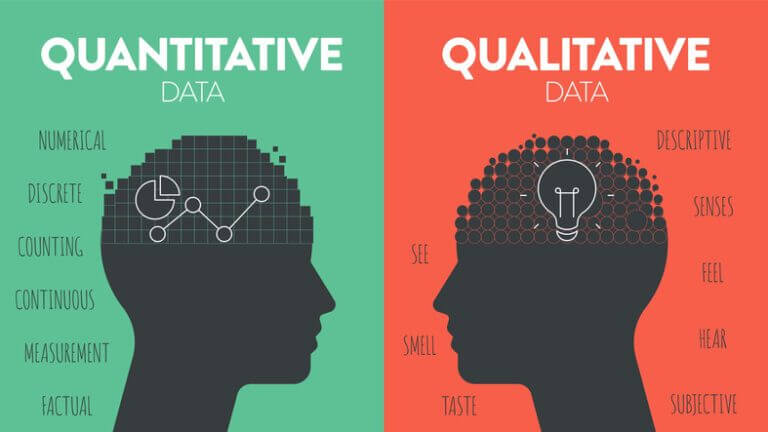
How product leaders can make user testing work for them
Misunderstandings about SaaS user testing misconceptions often prevent product leaders from reaping the full benefits of this incredibly valuable process. From believing testing is too expensive to assuming it requires a formal lab environment, these myths can hold your team back from creating truly user-centered products.
In this article, I will debunk the most common misconceptions and explore how embracing user testing can lead to SaaS success.
1. “User testing has to be done in a lab”
A common belief is that user testing requires a sterile, formal lab environment. While labs can be useful in certain contexts, most SaaS product testing can be done remotely or in informal settings. Tools like Lookback, Maze, and Zoom allow you to gather valuable feedback from users wherever they are — no lab coat required.
For SaaS products, remote testing is particularly effective because it mirrors how users interact with your platform in real-life scenarios. Whether they’re using your tool from a coffee shop or their home office, testing in their natural environment often yields more actionable insights.
Additionally, remote testing opens the door to a broader and more diverse group of participants, enabling you to reach users across different locations, time zones, and even device preferences. This flexibility makes it easier to identify usability challenges that might only surface under specific conditions, such as slow internet speeds or smaller screen sizes.
2. “You need to test with a lot of people”
Many product leaders mistakenly think they need dozens (or even hundreds) of participants to get meaningful results. This misconception can discourage teams from testing, believing it to be an overwhelming task. However, research consistently shows that testing with just 6 to 8 users can uncover up to 85 percent of usability issues. The key is to focus on quality over quantity by selecting participants who closely align with your target audience and represent your key user personas.
Smaller, well-targeted tests also allow for quicker iteration cycles, enabling teams to gather feedback and make improvements without stalling development. Testing in smaller groups ensures each participant’s feedback is thoroughly analyzed, making it easier to pinpoint specific pain points and actionable insights.
Here’s an example: At Standard Beagle, we conducted a usability test with only six users for a client’s navigation redesign. The results identified critical bottlenecks, leading to an overhaul that significantly improved task success rates and user satisfaction. This small-scale test not only saved time and resources but also demonstrated that even a handful of users can reveal patterns and pain points that might otherwise be missed. For SaaS leaders, the lesson is clear: It’s not about how many users you test with. It’s about testing with the right users.
3. “User testing slows down the process”
It’s easy to see user testing as a bottleneck, slowing down already tight timelines, but the reality is quite the opposite. Catching usability issues early in the development process reduces costly revisions later, ensuring teams don’t waste time fixing problems after launch. Agile teams can incorporate lightweight testing methods, such as quick prototype evaluations or moderated remote sessions, that fit seamlessly into sprints without disrupting workflows. This allows them to gather feedback and iterate in real-time, ultimately moving faster overall.
One of the key benefits of integrating testing into sprints is the ability to focus on specific features or interactions, making the process highly targeted and efficient. Teams can test, refine, and validate individual components before they are fully developed, avoiding the need for large-scale rework down the line.
Example: During the development of a health tech app, we used rapid, iterative testing with prototypes to identify potential roadblocks before they became costly problems. Each testing round took just a few days and involved actionable feedback that directly influenced design decisions. By catching issues before coding began, the team saved weeks of rework and ensured the product met user needs from the start. This iterative approach is essential for SaaS products, where continuous improvement and responsiveness to user feedback are critical to maintaining a competitive edge.
4. “User testing is too expensive”
Budget concerns often prevent SaaS companies from investing in user testing, but this misconception overlooks the accessibility of modern testing methods. While lab-based testing or third-party firms can be costly, DIY options are affordable and effective. Leveraging tools like UserTesting or conducting remote tests with in-house team facilitation can help stretch your budget further.
The real cost comes from skipping testing altogether. Launching a product that fails to meet user needs can result in high churn rates and expensive post-launch fixes. Steve Krug’s usability testing methods, outlined in his books Don’t Make Me Think and Rocket Surgery Made Easy, offer simple ways to introduce regular, low-cost testing into your workflow.
5. “User testing is a ‘one-and-done’ activity”
One of the most damaging SaaS user testing misconceptions is the idea that testing is a single milestone. In truth, user testing is an ongoing process that should evolve alongside your product. From early prototypes to live features, iterative testing ensures your product stays relevant and meets user needs over time.
Case study: For Central Health, user testing was an integral part of every stage of their redesign process. By continuously testing and iterating, we ensured the final website addressed user pain points and exceeded expectations at launch—and beyond.
6. “User testing only applies to new products”
Some product leaders believe user testing is only necessary during the launch phase of a product. However, this is one of the most common SaaS user testing misconceptions. Testing isn’t just a one-time activity; it’s a continuous process that supports the entire product lifecycle. Regular testing is equally crucial for feature updates, onboarding flows, and even legacy systems that need to stay relevant in a competitive market.
By incorporating user testing at every stage, SaaS teams can ensure their product evolves to meet changing user expectations and market demands. For example, testing a new onboarding flow before rolling it out can help identify friction points that might otherwise lead to user frustration and churn. Similarly, evaluating updates to key features allows teams to validate improvements and avoid introducing new usability issues.
Legacy systems, in particular, benefit from regular usability testing, as their user base may include long-time customers who have developed specific workflows and habits. Testing helps uncover pain points that could be addressed to improve retention and satisfaction. In the fast-moving SaaS space, staying connected to user needs through continuous testing ensures your product remains competitive and customer-centric.
7. “Users will tell you what they want”
While user interviews and surveys are valuable, they’re not a substitute for observing real behavior during testing. Users may articulate what they think they need, but their actions often reveal deeper pain points or unspoken frustrations. This is where usability testing shines—it bridges the gap between what users say and what they do. Observing users interact with your product uncovers behaviors and challenges that might not surface in a conversation or written feedback.
One of the most significant SaaS user testing misconceptions is the belief that user feedback alone is enough to guide design decisions. However, relying solely on what users express can lead to a product that meets stated desires but falls short in real-world usability. For example, users might request a specific feature but struggle to navigate to it or use it effectively when implemented. Testing ensures you’re designing solutions that align with actual behavior, not just expressed opinions.
By combining observational testing with other research methods, SaaS teams gain a holistic understanding of user needs. This approach helps prioritize improvements based on how users truly interact with the product, leading to more intuitive designs and better overall user satisfaction.
The ROI of user testing for SaaS products
Investing in user testing often feels like an added expense to product leaders juggling tight budgets and aggressive timelines. However, the return on investment (ROI) of user testing is undeniable, particularly in the competitive SaaS landscape. Here’s how a well-executed testing strategy can pay off:
1. Reduced development costs
Addressing usability issues during the design or prototype stage is significantly less expensive than fixing them post-launch. The earlier problems are identified, the fewer resources are wasted on building features that don’t resonate with users.
For example, let’s say your team spends weeks building a feature only to discover users don’t understand how to use it—or worse, they don’t need it at all. By conducting usability testing early, you can validate assumptions, identify gaps, and ensure development time is spent building what truly matters.
Stat to Consider: According to the Systems Sciences Institute at IBM, the cost of fixing an issue found after product release is 4 to 5 times higher than addressing it during design.
2. Improved customer retention
SaaS businesses thrive on recurring revenue, which makes customer retention critical to long-term success. A clunky or confusing user experience is one of the fastest ways to lose customers. User testing helps you pinpoint friction points and improve your product’s usability, keeping customers engaged and loyal.
Consider onboarding as an example: If users struggle to understand your product during the first few days, they’re unlikely to stick around. Testing your onboarding process can reveal barriers and allow you to address them before they lead to churn.
Case Study: A SaaS client at Standard Beagle experienced a 40% increase in activation rates after redesigning their onboarding process based on user testing feedback. This improvement directly reduced churn and increased customer lifetime value (CLV).
3. Faster time-to-market
It might seem counterintuitive, but user testing can actually accelerate your product release timelines. By identifying potential issues early, you avoid the cycle of endless revisions and last-minute fixes that delay launches. Testing also helps teams prioritize features that provide the most value, ensuring a more focused and efficient development process.
Real-life example: During the development of a health tech app, we conducted rapid usability tests on prototypes, gathering actionable feedback within days. These insights allowed the team to refine the design and avoid major rework, shaving weeks off the development timeline.
4. Increased customer satisfaction
Happy users are more likely to renew subscriptions, recommend your product, and leave positive reviews. User testing helps you align your product with user needs, ensuring a seamless experience that leaves a lasting impression.
Stat to consider: A study by Forrester found that companies investing in UX see an average ROI of $100 for every $1 spent.
5. Competitive advantage
In a crowded SaaS market, a great user experience can set your product apart. Companies that prioritize usability and customer-centric design often outperform competitors who focus solely on features or speed to market. By consistently testing and iterating, you create a product that not only meets but exceeds user expectations.
By viewing user testing as an investment rather than an expense, SaaS leaders can unlock its full potential. The cost of not testing far outweighs the time and resources spent ensuring your product delivers real value — lost revenue, poor retention, and expensive post-launch fixes.
The takeaway for SaaS product leaders
Misconceptions about user testing — especially SaaS user testing misconceptions — can hold your team back from unlocking your product’s full potential. The reality is that user testing is both accessible and essential for driving SaaS success. Whether you’re a lean startup or an established company, embracing iterative, cost-effective, and behavior-focused testing will give your product a competitive edge.
Don’t let these myths prevent you from delivering a better user experience, reducing churn, and achieving long-term growth. Ready to see how user testing can transform your product? Contact Standard Beagle for a free SaaS UX audit today and take the first step toward actionable insights and measurable success.











